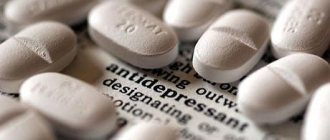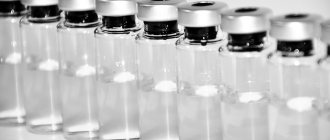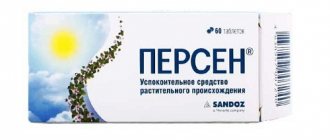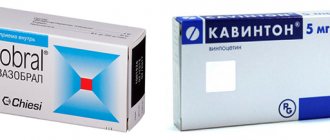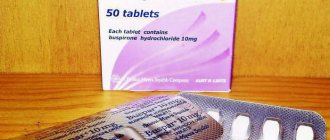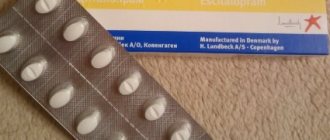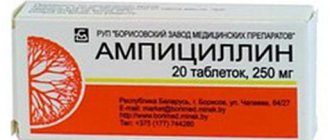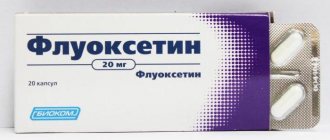The problem of mental disorders associated with changes in mood, the appearance of a depressed state, and a decrease in vitality has recently become increasingly relevant. Experts call this condition depressive or simply depression. The danger is that suicidal intentions most often arise against a depressive background. Psychotherapists warn that depression must be fought, and the sooner the better. The modern pharmaceutical market offers a number of effective antidepressants that can eliminate the problem. One of these antidepressants is Fevarin.
Reducing the suicidal factor
Affective disorders accompanied by a persistent decrease in mood, as a rule, tend to be complicated by suicidal intentions. Experts warn against prolonging the course of the disease and recommend correcting the mental state by taking special antidepressant medications, one of which is Fevarin. Reviews available about the effectiveness of this drug allow us to conclude that this type of antidepressant specifically affects the elimination of psychomotor and psychosomatic manifestations of a prolonged depressive state. "Fevarin" is a new generation drug. It belongs to a number of serotonergic antidepressants that do not worsen the quality of life of a sick person.
Compound
The main active ingredient, fluvoxamine, is a specific inhibitor that affects brain neurons.
It has no effect on adrenergic processes, does not cause a sedative or stimulating effect.
It has a cumulative effect, for this reason the therapeutic effect of the drug is noticeable no earlier than after 10-15 days.
In some patients, positive changes in mental state are observed only after a month.
Additional components: mannitol, starch (pregelatinized and corn), silicon dioxide, sodium stearyl fumarate, macrogol, talc, hypromellose, titanium dioxide.
Available in white film-coated tablets.
In the register of medicines (RLS) the drug is called Fevarin.
Principles of treatment for depression
When treating mental disorders with antidepressants, doctors take into account the fact that the treatment process itself includes several stages. The first, and most important, stage is the effective treatment of depression itself. After the patient has recovered, it is important to prevent relapses of the disease; therefore, the second stage of treatment will be the prevention of depressive conditions. And the last stage is to improve the quality of life of a depressed patient, since various side effects develop during the use of antidepressants. The use of several drugs for treatment at all three stages is inappropriate; it will be more effective to use one “Fevarin”. Reviews from psychiatrists about the use of the drug in medical practice indicate that this medicine helps patients at all three stages with long-term use.
Pharmacodynamics and pharmacokinetics
Pharmacodynamics
The drug selectively inhibits the reuptake of serotonin by brain cells and has minimal effect on noradrenergic transmission. It has a weak ability to interact with histaminergic, cholinergic, alpha and beta adrenergic, m-dopaminergic and serotonergic receptors .
Pharmacokinetics
When taken orally, it is completely adsorbed from the intestines. The maximum concentration is observed 4–8 hours after administration, equilibrium concentration is achieved after two weeks. Bioavailability – 53% after initial metabolism in the liver. Food does not affect the pharmacodynamics of Fevarin.
Approximately 80% of the molecules of the active substance bind to blood proteins.
The half-life from the blood for a single dose is 13–15 hours, for multiple doses it is 17–22 hours.
The metabolism of Fevarin is localized in the liver. The drug undergoes biotransformation by oxidative demethylation . Metabolites are excreted by the kidneys. Only 2 out of 9 metabolites have pharmacological activity.
Pharmacokinetics are the same regardless of age and the presence of renal failure. Metabolism may be inhibited in persons with liver disease.
The mechanism of action of the drug "Fevarin"
The antidepressant "Fevarin" acts selectively on the patient's brain, while blocking certain processes of brain activity, thereby non-aggressively affecting the patient's psyche. Therefore, when treating depression of various origins, doctors use the drug “Fevarin”. Reviews from doctors who practice this antidepressant allow us to conclude that the first improvements occur in patients already at the end of the first week of taking the medicine. Patients experience a decrease in the level of anxiety and motor restlessness. Those patients who were prescribed a dosage of 100 mg/day by the doctor experienced virtually no side effects, manifested in drowsiness or apathetic lethargy. Patients with severe depression took Fevarin tablets at a dosage of 200-300 mg/day. Reviews of treatment with such doses indicate a side effect - drowsiness, which disappears after two weeks of treatment with the drug.
Possible negative reactions
When taking an antidepressant, adverse reactions may occur:
- decreased appetite;
- lack of body weight, up to the onset of anorexia;
- hallucinations;
- persecution mania;
- euphoria;
- confusion;
- suicidal tendencies;
- anxiety;
- nervousness;
- increased excitability;
- insomnia at night;
- daytime sleepiness;
- seizures;
- dizziness;
- headache;
- tachycardia;
- nausea;
- vomiting;
- diarrhea;
- disturbances in liver function;
- hypotension (low blood pressure);
- increased sweating;
- urinary disorders;
- photosensitivity.
Women may experience menstrual irregularities during treatment with Fevarin.
Like most antidepressants, Fevarin causes a “withdrawal syndrome,” especially when the drug is abruptly stopped.
The patient begins to feel body aches, nervousness, severe depression, insomnia, convulsions, rapid heartbeat, and headache.
These symptoms go away quite quickly when taking the next dose of an antidepressant. This worsens the patient’s dependence on the drug.
Antidepressants are compared to narcotic substances - a powerful addiction arises from the drug, and when you stop taking it, the patient experiences sensations similar to drug withdrawal.
To alleviate the patient’s condition and avoid “withdrawal syndrome,” it is necessary to gradually reduce the dose of the drug, until it is completely discontinued.
Side effects
In addition to drowsiness and apathy, other side effects are diagnosed in patients taking Fevarin. Feedback from patients using the drug suggests that nausea is a common side effect of using this medication. Most often they complain about this symptom; sometimes fluctuations in body weight, disorders of the autonomic system, and the digestive tract are diagnosed.
In addition, some patients noted a sharp deterioration in their condition, sleep disturbances, increased anxiety, even the appearance of hallucinations. In their condition, such patients consider Fevarin to be to blame; reviews from doctors about such manifestations indicate that most often this happens in cases where patients, self-medicating, have prescribed the medicine for themselves. In any case, treatment should be carried out under the close supervision of doctors and, if necessary, adjusted by specialists.
Fevarin tablets instructions for use - analogues - side effects - reviews
Fevarin is an antidepressant with the same mechanism of action as fluoxetine. As you know, the latter is the most used antidepressant on the domestic market.
Fevarin has a number of advantages. It is less likely to cause agitation, improves sleep, affects libido to a lesser extent, and has a mild sedative effect.
In some countries it has gained wide popularity among doctors and patients.
Release form
Fevarin is available in the form of white, round or oval tablets. One blister contains 15 tablets; one package can contain one or two blisters. Each tablet contains 50 or 100 mg of active ingredient. The dosage is indicated on the packaging. Tablets of different dosages vary in shape, 50 mg are round, 100 mg are oval.
Pharmacological group
Fevarin is a psychotropic drug with antidepressant activity. The drug group is selective serotonin reuptake inhibitors (SSRIs). Fevarin, like its main active ingredient, is the representative of the group that has anti-anxiety activity.
Pharmacological properties
The mechanism of action of the drug is based on the selective blockade of the re-entry of serotonin into the cell after its release.
Normally, serotonin, as one of the mediators of the central nervous system, exits the neuron into the synaptic cleft between cells, binds to the receptors of the neighboring neuron, thus transmits information, and then returns back to its neuron. At the same time, this process occurs with thousands of serotonin molecules.
It has been proven that in people with depression and obsessions, the level of serotonin in brain cells is reduced.
Fevarin blocks the entry of this mediator into the cell, moreover, serotonin remains in the synaptic cleft longer and interacts with receptors more times.
Systematic intake of fevarin stimulates the synthesis of new serotonin in the neurons of the central nervous system. It takes time to start this process, which explains the delayed effect of the drug.
Thus, this drug increases the concentration of the mediator responsible for good mood, which helps fight depression and other emotional disorders.
In addition, fevarin slightly affects the exchange of two other mood mediators - dopamine and norepinephrine, which causes a number of side effects and contraindications. The drug, unlike many antidepressants, has virtually no effect on the metabolism of acetylcholine, the main mediator of the autonomic nervous system, which makes fevarin a safer medication.
Indications
The use of fevarin is justified in the following cases:
- Recurrent depressive disorder, mild or moderate episode of depression;
- Single episode of depression;
- Bipolar affective disorder, current episode of depression;
- Decreased mood in old age or with diseases of various organs and systems;
- Obsessive thoughts and/or movements;
- Somatoform and functional disorders in complex treatment.
Fevarin has a mild anti-anxiety effect, so it can be prescribed in cases where depressive or obsessive-compulsive syndrome is accompanied by anxiety, fear, and agitation.
Contraindications
There are a number of conditions for which fevarin cannot be prescribed, as well as conditions that require careful use. Strict contraindications to the use of this drug include:
- Hypersensitivity to any components of the drug. First of all, we are talking about intolerance to fluvoxamine, since this is the main substance. However, a strong reaction to auxiliary components is also a contraindication.
- Bipolar affective disorder, current episode manic. Relatively speaking, mania is an antidepressant, an absolutely opposite direction of affect. Treating her with any antidepressants is contraindicated.
- Concomitant use with monoamine oxidase inhibitors. Combining different groups of antidepressants is contraindicated, since in this case their side effects overlap and intensify. Fluvoxamine can be used no less than 14 days after discontinuation of monoamine oxidase inhibitors. Conversely, after discontinuation of fluvoxamine, MAOIs can be prescribed only after 2 weeks.
In addition to absolute ones, there are a number of relative contraindications. These include:
- Liver and/or renal failure in the stage of decompensation;
- Anamnesis aggravated by cardiovascular diseases, severe atherosclerosis, myocardial infarction, strokes;
- Epilepsy and convulsive syndrome of other etiologies;
- Thrombocytopenic purpura or another cause of decreased platelets in the general blood test, increased bleeding;
- Pregnancy at any stage;
- Childhood.
Pregnancy and childhood are contraindications due to the fact that studies have not been conducted on the appropriate groups of patients. In this case, fevarin can be prescribed if the expected benefit is greater than the possible harm.
Side effects
Fevarin, like any psychotropic drug, has a fairly large number of side effects.
The most common of them include loss of appetite, headache, dizziness, sleep disturbances, both insomnia and drowsiness, nausea, constipation, dry mouth.
These symptoms gradually increase as you take the drug, and then disappear on their own with constant use.
In addition, sometimes when taking fevarin there is a decrease or increase in body weight, development or worsening of endocrine metabolic diseases, and increased sweating. Allergic reactions occur quite often, usually manifested by hives and itchy skin.
Sometimes neurological disorders develop, most often of an extrapyramidal nature; such patients suffer from tremors of the arms and legs, and changes in handwriting and manner of speaking are possible. Neurological symptoms disappear over time on their own with systematic use of the drug.
In rare cases, fevarin can cause productive psychopathological symptoms - hallucinations, delusions, serotonin syndrome, disorders of consciousness.
Cases of pathological bleeding when taking fevarin associated with a decrease in platelet counts have also been described. Particular attention should be paid to this in patients who are prone to thrombocytopenia.
Some patients experience sexual dysfunction - decreased libido, erectile dysfunction, anorgasmia, menstrual irregularities.
Cases of the development of akathisia - the inability to maintain a motionless posture - have been described. Such patients constantly move themselves or make stereotypical movements of their limbs. This syndrome occurs in very rare cases with long-term use of large doses of fevarin and goes away after its discontinuation.
Many side effects are observed when using fevarin with other medications.
For example, when taking different groups of antidepressants together, or mixing with antihypertensive, antiarrhythmic drugs, antibiotics and cytostatics.
You should check with your doctor about the possibility of combination therapy. Another combination that is undesirable in terms of side effects is fevarin and alcohol. You should find out more about this.
Reviews
Diana M .: “After divorcing my husband, I had terrible depression, obsessive thoughts and generally felt bad. I wasn’t afraid to go to a psychotherapist who prescribed fevarin. I drank it, gradually increasing the dosage.
The first two weeks there were many side effects such as insomnia, nausea, and occasional sweating. Two weeks later everything passed and life began to sparkle with new colors.
Now I am very glad that I started taking the drug, I recommend it to everyone, but only after consulting a doctor.”
Ekaterina P .: “Depression hit me completely unexpectedly. It’s just that at one point life began to deteriorate, everything around became gray. My doctor prescribed Fevarin to me; the drug was quite expensive, but I decided to buy it.
At first everything was fine, there were no side effects, the product helped me. After about a month or a little earlier, I began to notice that my appearance was changing. When I stepped on the scale, I was simply horrified, there was +15 kg to my weight, I don’t know how I didn’t notice it before.
I stopped taking Fevarin and asked to be prescribed another drug, excess weight is a new reason for depression.”
Review from a psychiatrist : “Fevarin is a standard representative of its group of drugs. Selective serotonin reuptake inhibitors are the most commonly used antidepressants.
The advantage of fevarin among representatives of this group is its sedative effect. When prescribing other drugs, it is often necessary to supplement therapy with light tranquilizers; when taking fevarin, you can get by with one tablet.
The drug is well tolerated.”
Overdose of the drug "Fevarin"
Since Fevarin is used to treat depressed patients, cases of overdose are quite common. In addition to the fact that the doctor, when prescribing the drug, clearly pronounces and prescribes the instructions for use, there are also instructions for use in the packaging of the drug “Fevarin”. Reviews from those patients who intentionally overdosed when taking it indicate dyspeptic disorders and heart rhythm disturbances that occur as a result of increasing the dose of the drug. There were no cases of death among patients who deliberately overestimated doses, although medicine knows of cases where patients who took 100 tablets of the drug “Fevarin” at the same time survived.
Reviews about the treatment of overdose allow us to conclude that the drug is non-toxic: the patient should only rinse the stomach, then take activated carbon or any sorbent.
Dosage and use of Fevarin
In cases where the doctor does not prescribe a special treatment regimen, the instructions included in the package of the Fevarin medicine will help. Reviews from patients taking the drug according to the instructions indicate a correctly balanced dosage that has a non-aggressive effect on the patient’s psyche and body. Therefore, it is important to follow the recommended dosage. The initial dose, as a rule, is 50 mg/day of the drug "Fevarin". Reviews from patients taking this dose indicate the adequacy of the dose at the initial stage of treatment. Then the dose is gradually increased to the maximum allowable – 300 mg/day. The drug "Fevarin" is taken for 6 months, with a daily dose above 100 mg/day distributed over several doses. The first doses are taken in the evenings; after increasing the dosage, the drug is distributed evenly throughout the day. It should be noted that the dosage is increased only if necessary, and it is also advisable that dose adjustments be carried out by a psychiatrist.
If there is no positive effect within 10 weeks, you should stop taking the medication and consult your doctor.
How long does the syndrome last?
The course of withdrawal syndrome depends on the severity of the patient’s dependence on Fevarin. In mild forms, withdrawal is similar to symptoms of intoxication.
The average severity of addiction is characterized by an undulating course with alternating latent periods and relapse of signs of the underlying disease. Severe addiction is treated in a hospital setting.
The duration of manifestations is affected by:
- Compliance with doctor's recommendations. A course of treatment with antidepressants takes 6 months, subject to strict dosage and frequency of administration. By violating the therapeutic regimen, the patient increases the duration of elimination of dependence on the medication.
- Individual drug tolerance. In the absence of side effects during treatment, the syndrome is tolerated in a mild form.
- Patient's age. Older people react more severely to the lack of compensation and the manifestation of characteristic symptoms.
- Psychological dependence. Taking pills every day to improve well-being becomes a kind of ritual, without which the patient experiences anxiety and excitement.
The half-life of fluvoxamine ranges from 17 to 22 hours. Primary withdrawal symptoms occur 2-3 days after abrupt cessation of treatment. Based on the degree of addiction, rehabilitation lasts from 1-2 weeks to six months.
Self-administration of medications is prohibited. Short-term courses or a single dose of Fevarin cause tachyphylaxis - a decrease in the therapeutic effect. Repeated antidepressant therapy will be ineffective.
https://myweak.ru/zavisimosti/lekarstva-zavisimosti/sindrom-otmeny-fevarina.html
Contraindications to the use of Fevarin
Like any pharmaceutical drug, Fevarin has a number of contraindications. First of all, these are standard ones - intolerance or hypersensitivity to the components of the drug, severe dysfunction of the liver. Children under 8 years of age are also not prescribed the drug Fevarin as an antidepressant. Reviews of the use of the drug by children over 8 years of age indicate its effectiveness and efficiency in this age category of patients. The use of this medicine is also not recommended for pregnant women and nursing mothers during lactation, since the drug tends to concentrate in breast milk in small doses. Care should be taken when starting treatment with Fevarin even if the patient is taking any other drugs. In this case, the supervision of the treating doctor is especially necessary when treating with this antidepressant.
How music can help in treatment and what
Using music to eliminate depression is one of the therapy methods that also works during the period of antidepressant withdrawal. The pleasure received from musical compositions causes a feeling of happiness at the biochemical level.
Relaxing music envelops you and helps you move away from problems. A rhythmic motif allows you to tune in to a positive solution to accumulated issues and adds self-confidence. Regular music therapy sessions speed up the post-medication rehabilitation process.
Treatment of depression in children and adolescents
Treatment of children and adolescents with antidepressants is one of the most controversial issues in pediatrics. There is a fairly narrow list of drugs approved for use in pediatric practice, including Fevarin. Reviews from psychiatrists about the use of this antidepressant to treat patients over 8 years of age (specifically from 8 to 17) indicate its sufficient effectiveness in the treatment of behavioral and emotional disorders in children and adolescents. At an initial dosage of 25 mg/day, Fevarin is prescribed to children.
Reviews about the treatment of children with such doses are mostly positive, indicating positive dynamics starting from the third day. However, in some cases, an increase in dose was required. The maximum daily dose for children and adolescents is 200 mg/day, which is taken evenly throughout the day.
Reviews from patients who took the drug
Vladimir, 46 years old, Krasnodar: Work takes a lot of energy and nerves, which is why my sleep was greatly disturbed, I walked around irritated during the day and couldn’t concentrate. The psychiatrist prescribed an appointment with Fevarin, which gave me peace of mind during the day and sound sleep at night. The pills are expensive, but the drug is worth it.
The drug is very heavy. I took it to treat depression, the therapy lasted for several months. As a result, I developed a dependence on the drug and began to feel worse when the dose was reduced.
I decided to stop taking the antidepressant. After that, my depression returned, only in an even more severe form.
It must be remembered that in order to avoid negative reactions of the body when stopping an antidepressant, you should not abruptly interrupt its use! The dosage should be reduced gradually until the drug is completely discontinued.
"Fevarin" for an elderly patient
The high degree of safety of the drug allows Fevarin to be used effectively in the treatment of depressive disorders in elderly patients. Reviews of this category of patients about the antidepressant are almost all positive. In psychiatric practice, Fevarin is used to treat the elderly even more often than in the treatment of children and adolescents. Considering that this drug not only cures symptoms of depression, but also significantly improves the quality of life, it is indispensable for older people in some cases. Fevarin is also effective in treating older people due to the fact that it relieves not only depressive symptoms, but also removes psychosomatic manifestations, which are quite common in old people.
General description of the syndrome
Withdrawal syndrome is manifested by a deterioration in a person’s well-being. The body reacts by stopping the substance or reducing the dose of the drug that caused the addiction. The intensity of pathological manifestations depends on the properties and composition of the drugs.
To combat this condition, infusion therapy is used; the use of isotonic sodium chloride solution, glucose, diuretics, and specific antidotes is considered justified.
Withdrawal syndrome is the body's reaction when a person stops using drugs, tobacco, alcohol, or any addictive habit. One must avoid this because it can be fatal and must be treated on time.
The withdrawal symptom complex is an indicator of physical dependence formed against the background. The symptoms that make it up can be divided into: central and peripheral. This syndrome is also called withdrawal. More often it is formed due to alcohol, nicotine, drug and other addictions.
A high risk of developing manifestations of the withdrawal symptom complex is present when taking drugs that are endowed with the ability to be quickly eliminated from the body cavity, with prolonged use and abrupt cessation of their use.
The course is considered severe in children, elderly people and patients with a history of chronic diseases, or if they are in an acute form of the course.
A provoking factor of addiction - substances can influence biochemical processes, the functioning of the nervous system, endocrine glands and internal organs.
They are used to treat diseases, but over time they become addictive. Sudden withdrawal of a substance is accompanied by the inability of biological systems to restore their functioning.
Withdrawal is classified depending on the substance that provoked it; to carry out adequate therapy and determine further tactics, the syndrome is distinguished:
- Regenerative. A mild form of the disease, in which the body is able to fully recover without outside help.
- Stable. Its course is easy to predict and can be easily corrected through medication.
- Intermittent. Characterized by alternating changes of exacerbation and improvement. With adequate therapy, the prognosis is favorable.
- Degenerative. It has an unfavorable course and requires hospital treatment. There is a high risk of relapse.
Manifestations of the withdrawal symptom complex, the intensity of its symptoms depend on the substance that was used, its dose, and the duration of therapy.
The provoking factor of development is the systematic use of any surfactants, for example, alcohol, nicotine, opioids, cannabinoids, cocaine, and a number of drugs.
The intensity of pathological manifestations and the brightness of the clinical picture will depend on the rate of elimination of the substance from the body.
Manifestations of withdrawal syndrome are different, it all depends on the type of surfactant. Common clinical manifestations include depressive disorders, sleep problems, and increased levels of anxiety.
The syndrome can be mild, moderate or severe.
Mild degree manifests itself:
- insomnia;
- excessive excitability;
- increased level of irritability;
- anxiety;
- disruption of the digestive tract, which manifests itself as nausea and abdominal pain.
A moderately severe syndrome is characterized by the addition of such pathological manifestations as:
- trembling of limbs;
- increased level of sweating;
- cardiopalmus;
- increased blood pressure;
- unbearable nausea;
- vomit;
- diarrhea.
Abstinence in severe form is accompanied by the appearance of such manifestations as:
- increased body temperature;
- excessive excitability, which is accompanied by visual and tactile hallucinations, delusions;
- disturbances of consciousness.
Convulsive seizures may occur. Typically, the consequences of abrupt withdrawal of an addictive substance begin to appear 4-24 hours after stopping the use of the surfactant.
Symptoms reach their highest peak after 36-48 hours. However, these periods are arbitrary; for example, nicotine withdrawal syndrome can appear within an hour after the last cigarette smoked.
Stopping GCS is accompanied by a feeling of weakness, general malaise, and loss of appetite. In rare cases, nausea, vomiting, seizures, and the development of collapse are diagnosed.
Abrupt cessation of taking antianginal drugs for coronary heart disease increases the risk of angina attacks, increased blood pressure, and the development of pathological reactions to physical stress.
Withdrawal of barbiturates leads to anxiety, tremors, arrhythmia, problems falling asleep and staying asleep, irritability, and increased body temperature. In complicated cases, the development of psychosis with hallucinations is observed.
Withdrawal from opiates provokes the appearance of a runny nose, “goose bumps”, pupils dilate, pain in the muscle fibers and bones, shortness of breath, and anger appear.
Alcohol withdrawal is accompanied by a feeling of general fatigue, weakness, dry mouth, and hyperhidrosis.
Over time, pathological symptoms such as:
- skin hyperemia;
- sudden changes in pressure;
- headache;
- feeling of nausea;
- vomit;
- disorders of consciousness;
- tremor;
- gait disturbance.
There may be an increase in nightmares, the appearance of a depressive mood, and manifestations of aggression.
Doctors of various specialties and areas can diagnose withdrawal syndrome. It is necessary to collect anamnestic data, assess the patient’s general condition, pathological symptoms, and conduct a physical and neurological examination.
If necessary, additional examinations are prescribed, namely:
- ECG;
- Ultrasound of the liver, kidneys;
- general and biochemical blood test;
- OAM;
- blood test for the presence of narcotic substances.
Share with friends or Save for yourself! 4.6 / 5 (39 votes)

